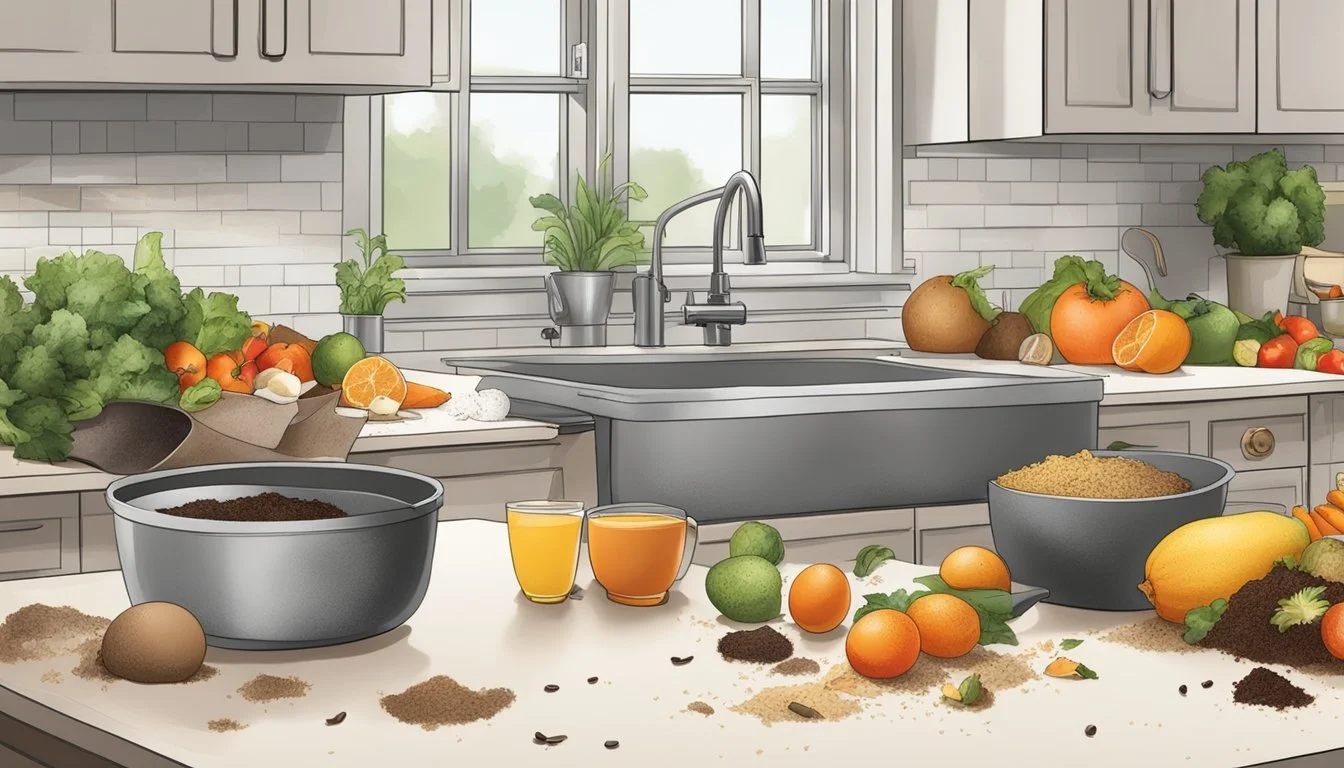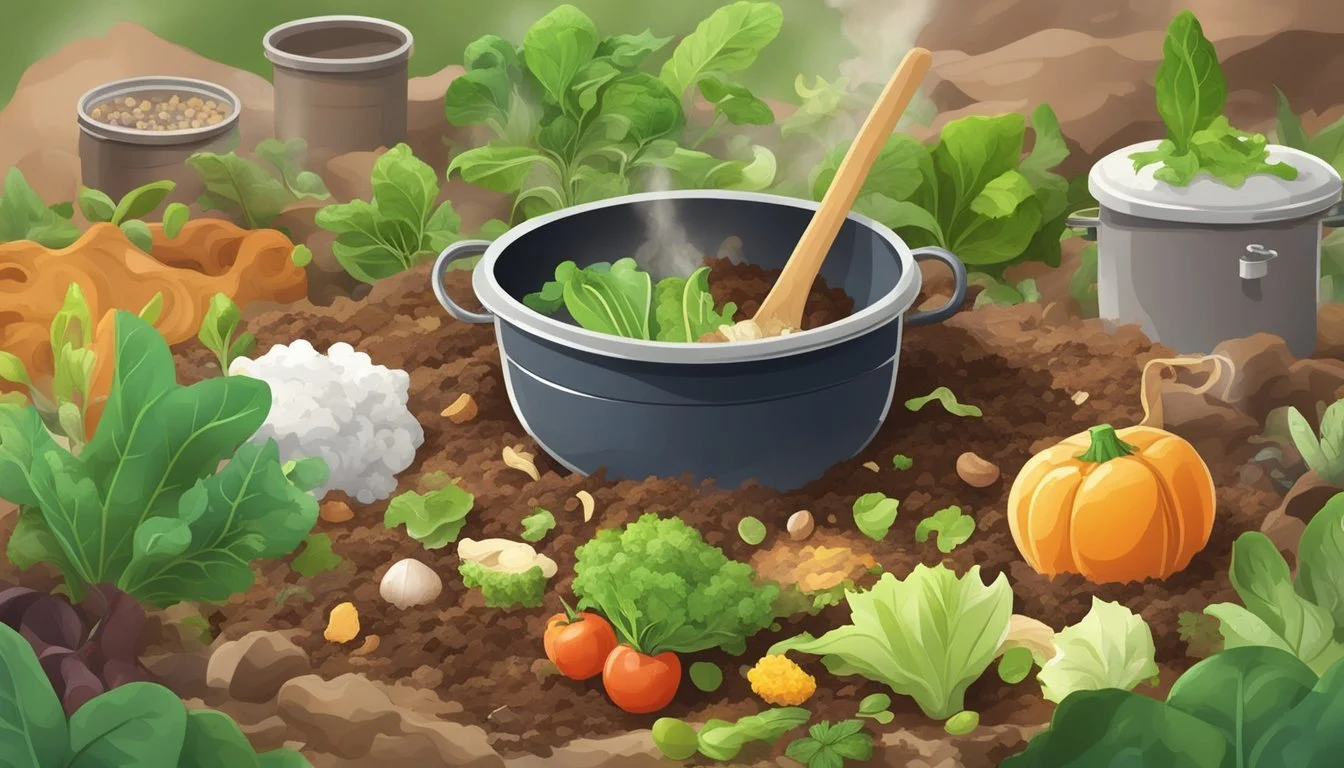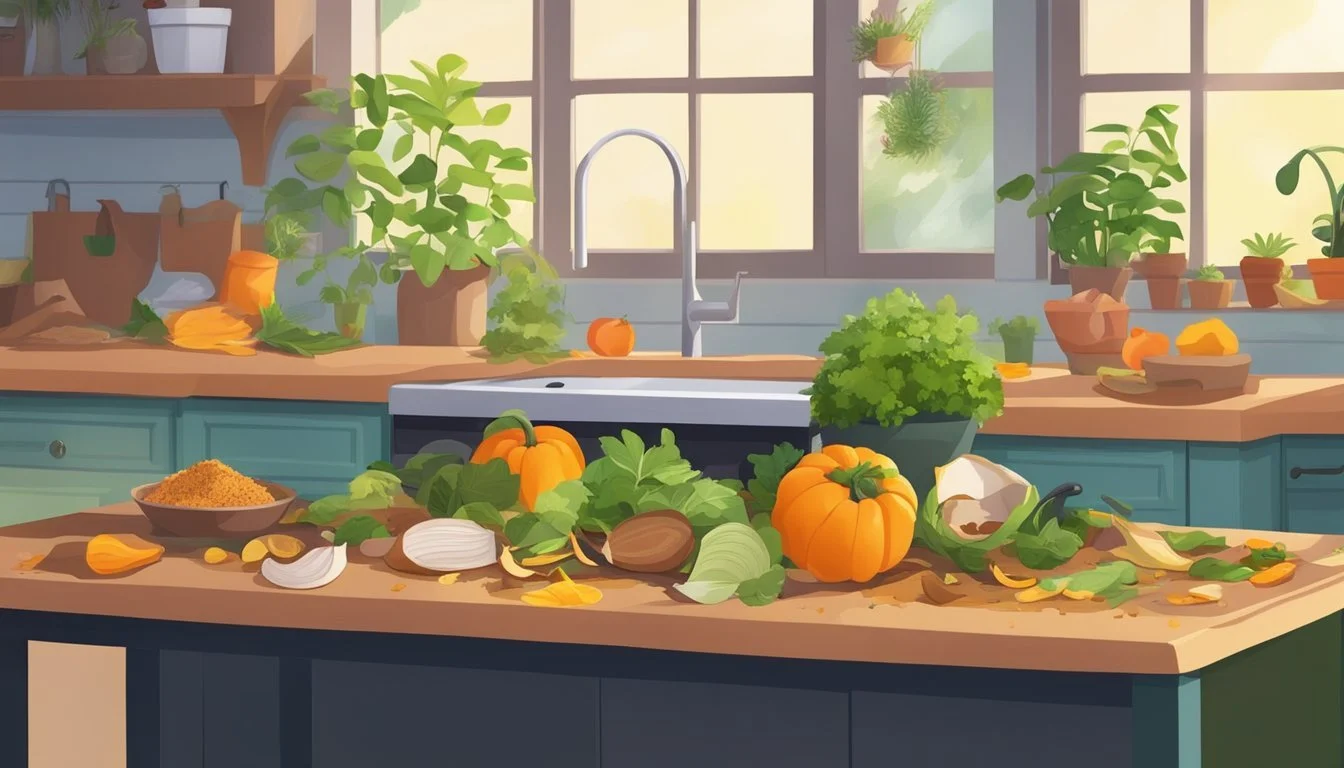Homemade Natural Fertilizers
Turning Kitchen Waste into Garden Gold
Understanding the value of kitchen waste can transform it from mere scraps headed for the landfill into a bountiful source of nutrition for the garden. Homemade fertilizers are a cost-effective and eco-friendly alternative to commercial products, allowing gardeners to make the most of their household waste. By utilizing leftovers such as fruit peels, coffee grounds, and eggshells, one can create nutrient-rich concoctions that cater to the needs of various plants.
Organic gardening has grown in popularity, with many seeking to tread lightly on the environment while cultivating their gardens. Homemade natural fertilizers fit seamlessly into this philosophy. They not only recycle kitchen waste but also improve soil structure, promote healthy plant growth, and encourage beneficial microbial activity. Creating these fertilizers at home can be a simple and rewarding process, providing plants with essential nutrients while reducing one's ecological footprint.
Moreover, the process of making fertilizer from kitchen scraps is straightforward and enables a closed-loop system within the home and garden. Whether it's concocting a fertilizer tea from banana peels or using crushed eggshells to add calcium to the soil, these organic solutions can lead to a thriving garden that's both sustainable and abundant. By embracing kitchen waste as a resource, gardeners can support a healthier garden and a sustainable world.
The Science of Decomposition
Understanding the science of decomposition is key to transforming kitchen waste into a resource for enhancing soil health. The process involves the breakdown of organic material into a rich substance, known as compost, that provides vital nutrients for plant growth.
Composting Fundamentals
Composting is a natural process where organic matter, such as kitchen scraps, is broken down into a nutrient-rich humus known as compost. A successful compost pile requires a balance of 'greens'—materials high in nitrogen like fruit and vegetable waste—and 'browns'—materials high in carbon like dried leaves and cardboard. Proper aeration and moisture are essential to maintain the activity of the decomposing agents. An effective composting setup accelerates the breakdown of organic matter and minimizes unpleasant odors.
Role of Microorganisms
Microorganisms, including bacteria and fungi, are the primary drivers of the composting process. These tiny organisms consume organic material as food, producing heat and releasing carbon dioxide and water as byproducts. Their activity is crucial for converting kitchen waste into usable compost, and their presence indicates a healthy ecosystem within the compost pile.
Bacteria: The most numerous and active decomposers; they thrive in different stages of the composting process.
Fungi: Breaks down tough debris, helping to recycle complex carbon compounds.
Nutrient Cycling
Once organic waste is fully decomposed, the resulting compost is teeming with nutrients essential for plant growth. These nutrients include nitrogen, phosphorus, and potassium, as well as trace minerals. Nutrient cycling occurs when these elements are returned to the soil, promoting soil fertility and plant health. Compost improves soil structure, increases moisture retention, and fosters the growth of beneficial soil organisms, all of which contribute to the robustness of the ecosystem.
Types of Kitchen Waste
Kitchen waste encompasses a variety of organic materials that can be transformed into nutritious soil amendments. Here, we examine specific categories of kitchen waste that are suitable for homemade natural fertilizers.
Vegetable and Fruit Scraps
Vegetable and fruit waste includes peels, cores, and stems. These remainders are rich in nutrients and break down easily, making them excellent for composting. They are pivotal in creating a balanced compost blend that gardens thrive on. Items like banana peels are especially high in potassium, a vital nutrient for plant growth.
Coffee Grounds and Tea Leaves
After brewing, coffee grounds and spent tea leaves contain a significant amount of nitrogen, which is an essential component of healthy soil. Used coffee grounds can be added directly to soil or compost bins. Similarly, tea leaves provide a slight acidic touch, beneficial for acid-loving plants. These remnants also improve soil texture and water retention.
Eggshells and Bones
Eggshells are a great source of calcium carbonate, which is important for cell growth in plants. Crushed eggshells can be sprinkled into compost or around plants to help fortify their structure. Bones, though not as commonly composted, can be boiled for broth and then crushed to provide phosphorus-rich material when added to compost heaps.
Other Organic Matter
This group includes various other biodegradables like bread, rice, pasta, and shredded newspaper or cardboard. These should be added to a compost pile in smaller quantities to maintain a healthy balance. Organic matter helps retain moisture in the soil and provides a slow release of nutrients as they decompose.
Creating Your Fertilizer
Creating homemade fertilizer from kitchen waste is a resourceful way to enrich garden soil. By using simple techniques and readily available materials like buckets and water, anyone can transform organic waste into valuable nutrients for their plants.
Simple Composting Techniques
Composting is a fundamental method for converting kitchen scraps into nutrient-rich organic fertilizer. To start, one needs a compost bin or designated compost pile. Combine brown materials such as dry leaves or shredded paper with green materials like fruit and vegetable scraps. Ensure the pile remains moist and aerate it regularly to speed up decomposition. After several months, the compost should be ready to use in the garden.
Trench Composting
Trench composting is an efficient way of composting directly in the garden. It involves digging a trench approximately 12 inches deep and burying kitchen scraps or yard waste. Over time, these materials break down, enriching the soil. This method is particularly suitable for gardening as it minimizes the effort of transferring compost while improving soil fertility effectively.
Vermicomposting Methods
Vermicomposting uses specific types of worms, like red wigglers, to decompose kitchen waste. One can start with a container or bucket filled with moistened bedding material and add worms and kitchen scraps. The worms will process the waste, leaving behind vermicompost, a high-quality organic fertilizer. Vermicomposting is ideal for indoor or small-scale composting and can be especially effective for gardening in limited spaces.
Liquid Fertilizers and Teas
Making liquid fertilizers or "teas" from kitchen waste is another DIY approach to homemade fertilizer. Common ingredients for these teas include weeds or green leaf waste soaked in water. After steeping for a few days to several weeks, the resulting weed tea provides an easy-to-apply liquid fertilizer. This method is an excellent choice for individuals requiring a quick-acting fertilizer that can be directly applied to the soil or used as a foliar feed.
Nutrient Profiles
In converting kitchen waste to organic fertilizer, understanding the nutrient profiles is crucial. The specific nutrients provided by compost can significantly impact plant growth and soil health.
Macronutrients Explained
Macronutrients are essential for plant growth and are consumed in larger quantities. These include nitrogen (N), phosphorus (P), and potassium (K), often referred to as NPK.
Nitrogen is vital for leaf growth and is abundant in vegetable scraps and coffee grounds.
Phosphorus supports the development of roots and flowers; it's found in banana peels and eggshells.
Potassium regulates plant metabolism and can be sourced from fruit wastes and vegetable peels.
These macronutrients are often the main components of commercial fertilizers, but through Transforming Kitchen Waste Into Organic Fertilizer, one can provide them naturally.
Micronutrients and Trace Elements
While required in smaller amounts, micronutrients and trace elements such as calcium, magnesium, and iron are still critical for the health and development of plants.
Calcium plays a part in cell wall structure and is prevalent in eggshells and certain vegetable scraps.
Magnesium is a central component of chlorophyll and can be supplemented through the use of coffee grounds and vegetable scraps.
Iron is essential for chlorophyll synthesis and can be found in green leafy vegetable waste.
Micronutrients and trace elements might be less emphasized than macronutrients, yet they are crucial components of a balanced diet for plants, readily available through methods like Making Natural Fertilizer from Kitchen Waste.
Application and Use
When leveraging kitchen waste as an organic fertilizer, careful consideration is necessary for the appropriate application and utilization. This ensures plants receive the full benefits without adverse effects on the soil quality.
Soil Amendment Techniques
Incorporating kitchen waste into the soil begins with composting, which turns scraps into nutrient-rich humus. Composting methods vary, from simple compost piles to advanced, aerated bin systems. Once the kitchen waste has decomposed, it can be mixed with the soil. A common guideline suggests a ratio of one-part compost to a minimum of two-parts garden soil for effective amendment. Applying this mixture can help to improve soil structure, aeration, and water retention.
Determining Application Rates
Application rates for homemade fertilizers hinge on factors like the type of plants being nourished and the current nutrient profile of the soil. Organic fertilizers, unlike synthetic ones, release nutrients more slowly, so there’s less risk of overapplication. A general rule is to apply a 2-inch layer of compost to the garden bed but testing soil beforehand can provide more precise guidance. Attention to the NPK - nitrogen, phosphorus, and potassium - content is also vital for balanced fertilization.
Crop-Specific Fertilization
Plants have unique nutritional requirements which dictate the formulation and timing of fertilizer application. For tomatoes, a higher phosphorus content encourages fruit development, whereas leafy greens may thrive with higher nitrogen levels. By observing plant performance and growth, gardeners can better tailor their organic fertilizer mix from kitchen waste, ensuring optimal health and yield of the crops.
In conclusion, making effective use of kitchen waste for plant fertilization involves mastery of soil amendment techniques, understanding of application rates, and knowledge of crop-specific nutrient needs. This section offers guidelines to empower gardeners in nurturing their plants with sustainable, organic practices.
Benefits of Natural Fertilizers
Utilizing natural fertilizers offers a trifecta of benefits: environmental safeguarding, enhancement of soil health, and improved plant growth and yield.
Environmental Impact
Natural fertilizers reduce the carbon footprint by repurposing kitchen waste that otherwise contributes to landfill accumulation. The process of converting kitchen scraps into organic fertilizer significantly lowers the volume of waste, thus mitigating methane emissions from decomposing organic matter in landfills.
Soil Quality and Health
Soil treated with organic fertilizers typically demonstrates improved structure and water retention. These fertilizers gradually release nutrients, which maintains soil health and minimizes the risks of over-fertilization and nutrient runoff, unlike synthetic alternatives. Furthermore, they introduce beneficial microorganisms to the soil, promoting a vigorous and self-sustaining soil ecosystem.
Plant Growth and Yield
Organic fertilizers not only enhance the health and productivity of plants but also improve the plant growth. The nutrients, primarily nitrogen, phosphorus, and potassium present in homemade fertilizers from kitchen waste, are essential for plant development. Regular use can lead to a higher yield of fruits and vegetables, further encouraging sustainable gardening practices.
Potential Challenges
Creating fertilizer from kitchen waste is a sustainable practice, but it involves challenges that need careful consideration to ensure the efficacy and safety of the resulting product for soil and plants.
Balancing Nutrient Ratios
When converting kitchen waste into fertilizer, one must ensure a balanced mix of nitrogen, phosphorous, and potassium (N-P-K), the core nutrients necessary for plant growth. An excess of nitrogen can 'burn' plants, while insufficient phosphorous might not support proper root development. It is crucial to either test the nutrient levels regularly or follow a well-established composting recipe that maintains balance.
Managing pH Levels
Kitchen waste varies in pH, which can affect the overall acidity of the soil. For instance, coffee grounds are acidic, while eggshells are alkaline. It's important to manage the pH of the compost to prevent it from becoming too acidic or too alkaline, which could impede plant growth. Integrating materials like lime can neutralize acidic compost, promoting soil fertility.
Pest and Disease Considerations
Composting kitchen waste can attract pests and might harbor disease-causing pathogens if not processed correctly. It is essential to ensure that the compost pile reaches a high enough temperature to kill harmful bacteria and fungi. Additionally, compost should be turned regularly to discourage pests and should not include meat or dairy products, which are prone to attracting vermin.
Advanced Topics
In the world of organic gardening, harnessing the power of kitchen waste not only contributes to a sustainable cycle but also enriches plants with essential nutrients. Focusing on the efficacy of compost tea and the strategic use of wood ash and Epsom salt can elevate a gardener's practice.
Role of Compost Tea in Gardening
Compost tea is a liquid solution derived from steeping compost in water, which can boost plant growth and soil health. It serves as a conduit for microorganisms from the compost to the soil, enhancing microbial activity. When applied, these beneficial organisms colonize the plant's root zone, increasing nutrient uptake and offering a line of defense against pathogens.
Microbe-rich compost tea can improve soil structure.
Nutrient content: Provides soluble nutrients for immediate plant uptake.
Utilizing Wood Ash and Epsom Salt
Wood ash, when used judiciously in the garden, offers a source of potassium and can raise the soil's pH. It should be applied sparingly and only to soils that benefit from a decrease in acidity.
Potassium: Essential for plant health, found in wood ash.
Soil pH: Wood ash can help neutralize acidic soils.
Conversely, Epsom salt is comprised of magnesium and sulfate, both vital nutrients that promote plant growth, flowering, and fruit production.
Magnesium: Crucial for chlorophyll production, found in Epsom salt.
Sulfate: Promotes plant nutrient absorption, also contained in Epsom salt.
Utilizing an Epsom salt fertilizer blend can correct magnesium or sulfate deficiencies in the soil. It's also praised for its role in creating lusher foliage and more prolific blooms in magnesium-starved gardens.
Sustainability and Future Outlook
In the realm of sustainable agriculture, the value of kitchen waste as an organic fertilizer is increasingly recognized for its role in enhancing soil fertility and supporting environmental conservation. The focus on these practices indicates a progressive shift towards methods that are both eco-friendly and agriculturally beneficial.
Continuous Improvement of Compost Quality
Composting kitchen waste is an ongoing process, demanding continuous refinement to improve final compost quality. One critical aspect is the carbon-to-nitrogen (C) ratio, which should be balanced to accelerate decomposition and prevent odors. Researchers constantly explore various composting methods, such as the integration of anaerobic effective microorganisms that can potentially create high-quality compost that rivals commercial fertilizers in its nutrient profile. A study elaborates on how treated model kitchen waste can yield dried pellets effective as soil improvers for various growing conditions.
Integrating Sustainable Practices
Sustainable practices such as crop rotation and the use of compost-derived from kitchen waste contribute meaningfully to long-term soil health. Crop rotation, a traditional agricultural technique, furthers the sustainable use of homemade fertilizers by preventing soil depletion and disrupting pest cycles. When farmers incorporate compost into their crop rotation schedules, they enhance soil structure and nutrient availability, leading to more robust plant growth and sustainable yields. This integration of sustainable practices reflects a holistic approach to food production and waste management aimed at fostering a resilient, zero-waste future.




